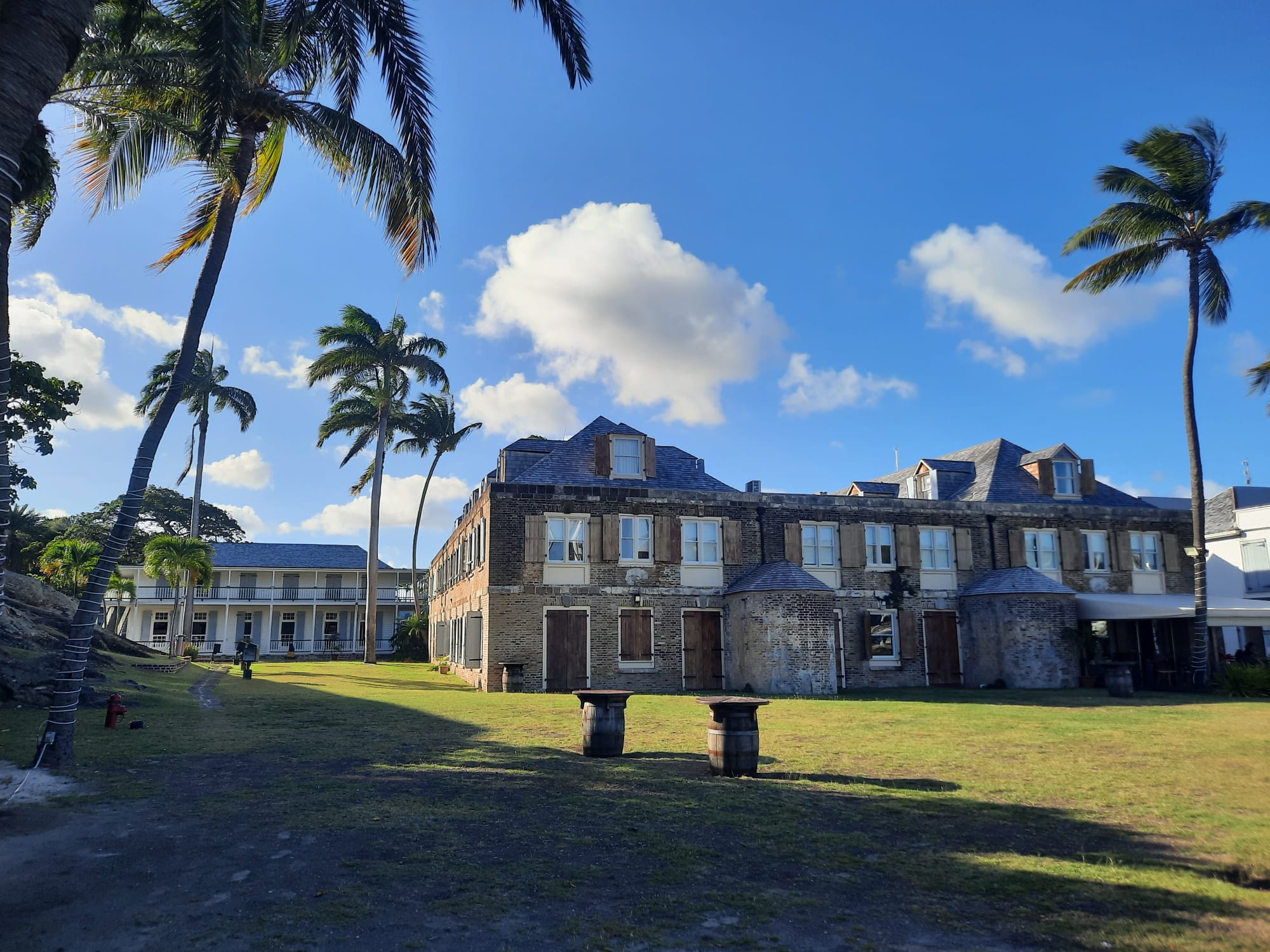Antigua & Barbuda For Culture Lovers – A Week Based In English Harbour
Is it possible to fit historic, archaeological and cultural sites into a Caribbean beach holiday (specifically one at English Harbour in Antigua)? Or course it is, and you’ve come to the right place to find out more!

Antigua & Barbuda For Culture Lovers
As most of you know already, the Salterton Arts Review is primarily a London-based arts and culture blog. I write about the things I experience on my doorstep from a contextualised, often museological perspective. When I have the opportunity to travel, this isn’t something I easily leave behind. I love to go to museums and archaeological sites wherever I travel. And I like to consider the history and culture of the places I go to. So these guides are intended for like-minded people to get a sense of how they can make the most of cultural opportunities when travelling, while also as relaxing and enjoying their holidays.
My most recent vacation took me to Antigua and Barbuda. From London I was able to fly direct to St John’s, the capital city on the island of Antigua. The Urban Geographer and I had chosen to stay on the far side of the island, at English Harbour. More on this shortly, but I would highly recommend this location to those who are looking for something unique rather than a beach holiday at a resort hotel.
There is plenty to keep holiday makers, including culture lovers, entertained during a week in Antigua and Barbuda. Below you will read a little about the country’s history, before diving into things to see, do, eat and drink. Let me know in the comments if there’s anything missing that I can add in a future edit.
And if you are heading to Antigua and Barbuda, enjoy! You’re going to have a wonderful time.
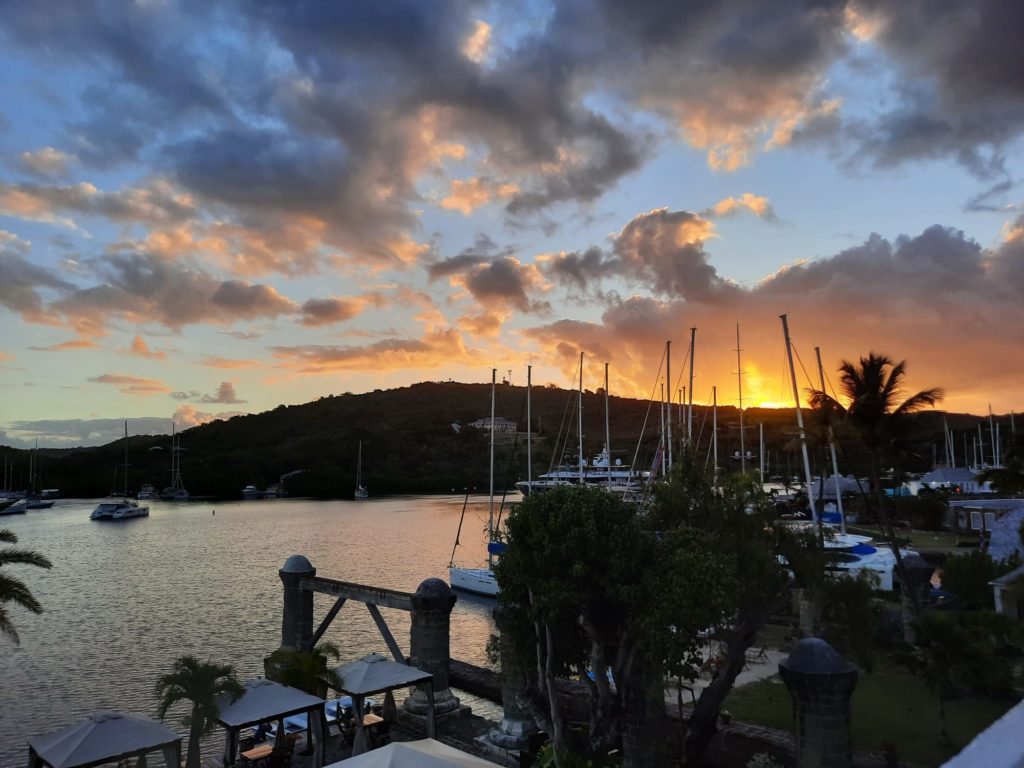
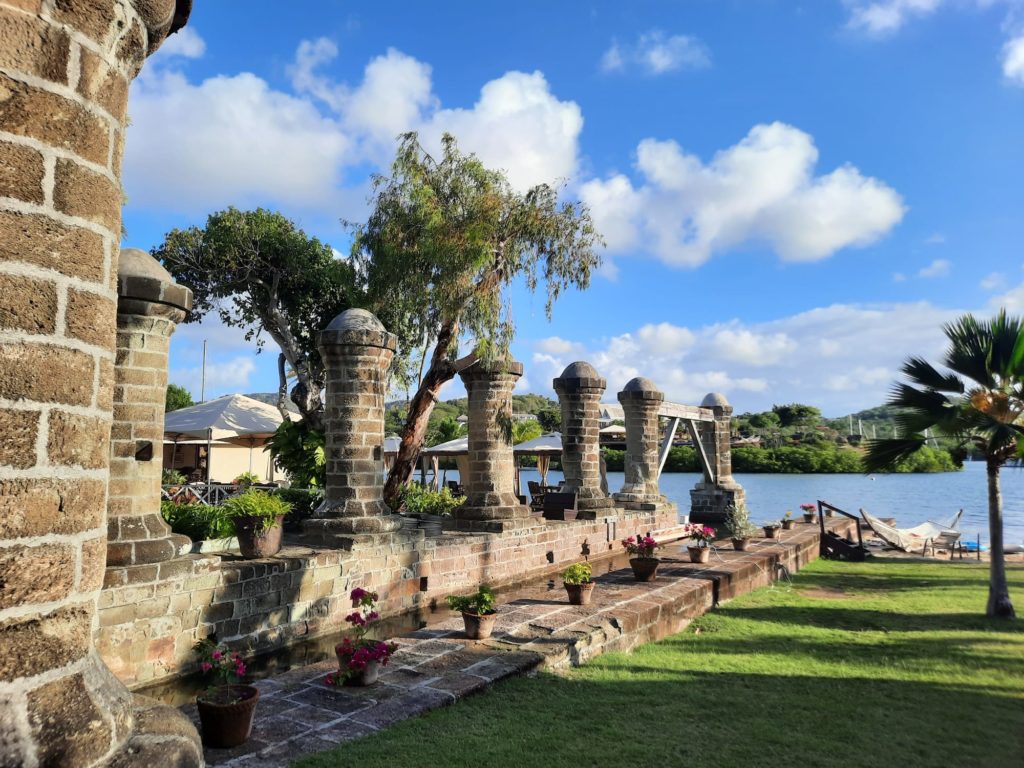
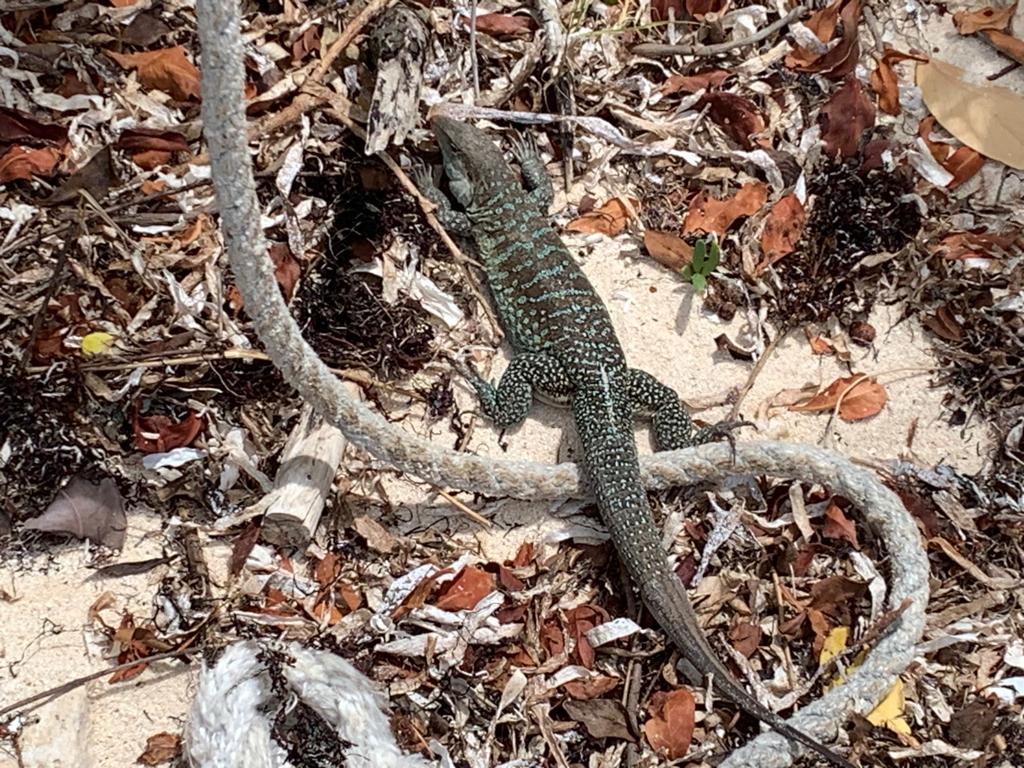
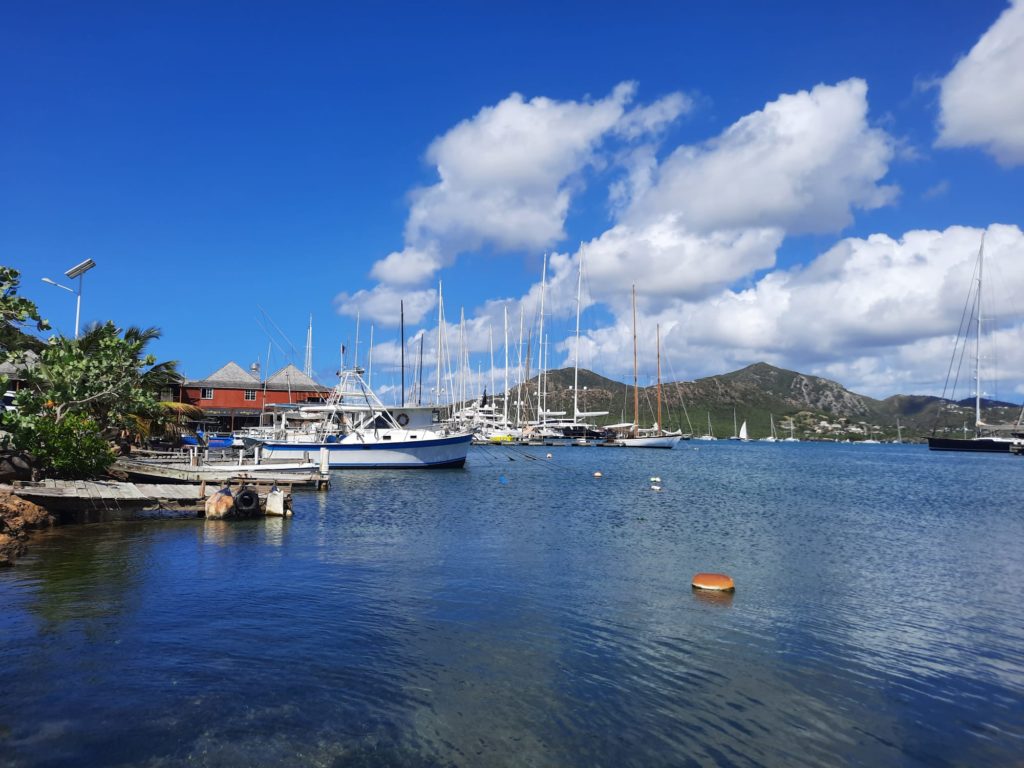

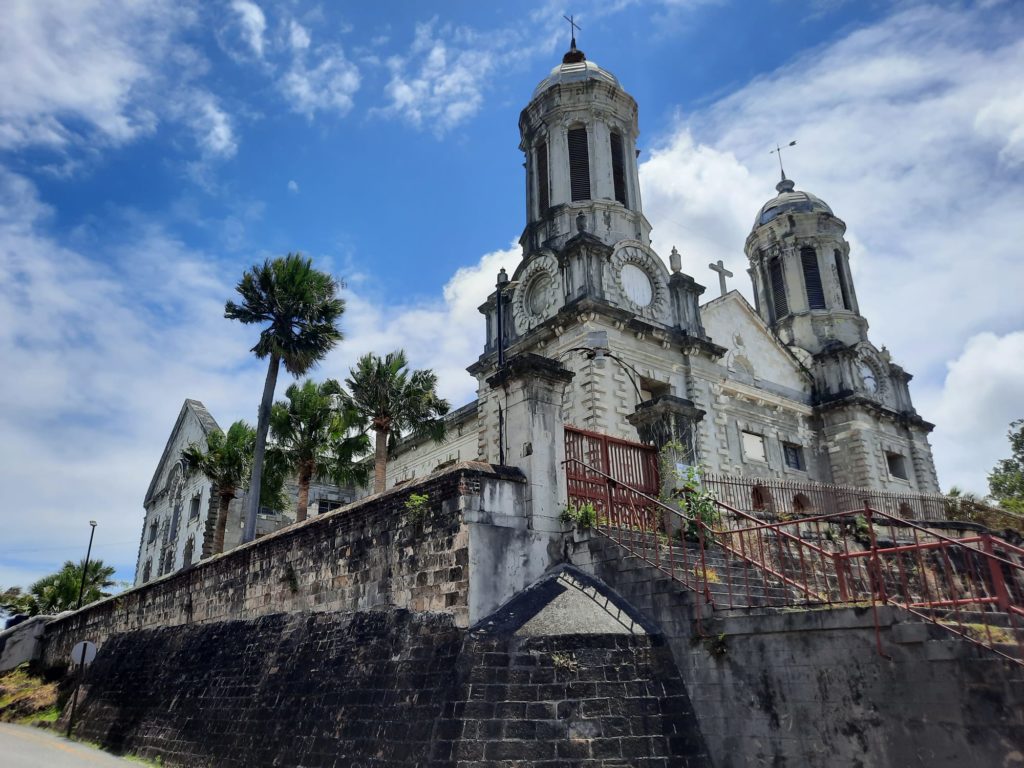
Antigua: A Brief Overview
Antigua and Barbuda form part of the Caribbean’s Leeward Islands, with the Atlantic Ocean on one side and the Caribbean Sea on the other. Independent since 1981, they were a British colony from first settlement in 1632 in Antigua and 1685 in Barbuda. Today just under 100,000 people live in Antigua and Barbuda, 97% of them in Antigua and many of those in the capital city, St John’s. 80% of GDP comes from tourism.
Unlike most major Caribbean islands, the island of Antigua was not inhabited when Columbus arrived there. It had previously been home to at least two distinct cultures (Siboney/Archaic and Arawak-speaking), but the prevailing theory is that the Arawak-speaking people left because of an issue still facing the island today: limited fresh water. With other islands within sight these earlier communities had little reason to stay where things were difficult. Today desalination plants help to plug the gap.
Speaking of the people of Antigua and Barbuda, I would not be doing my duty as a historian without acknowledging the islands’ connection to enslaved labour. Today well over 90% of the people of Antigua and Barbuda are descended from enslaved people transported from Africa, particularly West Africa. Their labour enriched local landowners who grew sugarcane and sold sugar, rum and molasses. The very focus of our post today, English Harbour, was a British naval base helping to protect the interests of those landowners at home and at sea. The history of resistance includes a slave revolt in 1736 led by Prince Klaas, and the abolishment of slavery in 1834 changed things for both plantation owners and enslaved workers (although not as quickly as you might think).
The islands of Antigua and Barbuda are today an attractive choice for a holiday. Their small size means you can see a lot (it’s under an hour to get anywhere in Antigua by car). And the islands themselves vary greatly. Antigua is hilly and forested, with a lot of secluded bays and beaches. Barbuda, the entirety of which was originally leased to the Codrington family to graze livestock, is flat and sun-baked. Each has different attractions depending on your interests. So it remains only to select a base and decide how to spend your time in Antigua and Barbuda, where “the beach is just the beginning“.
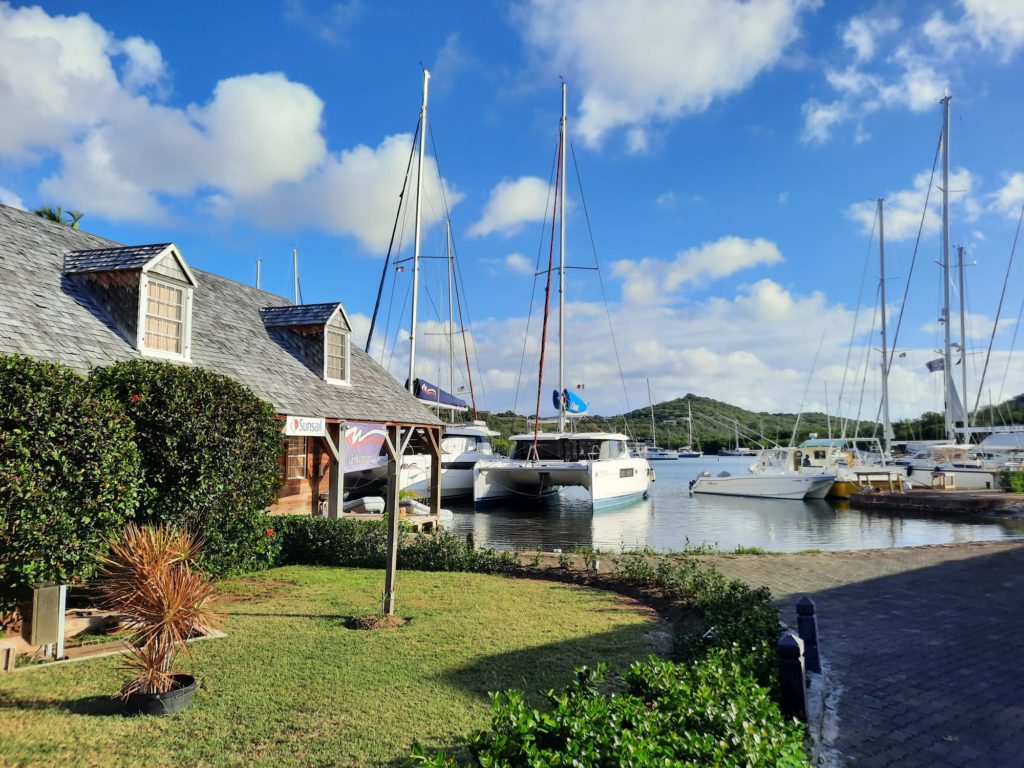
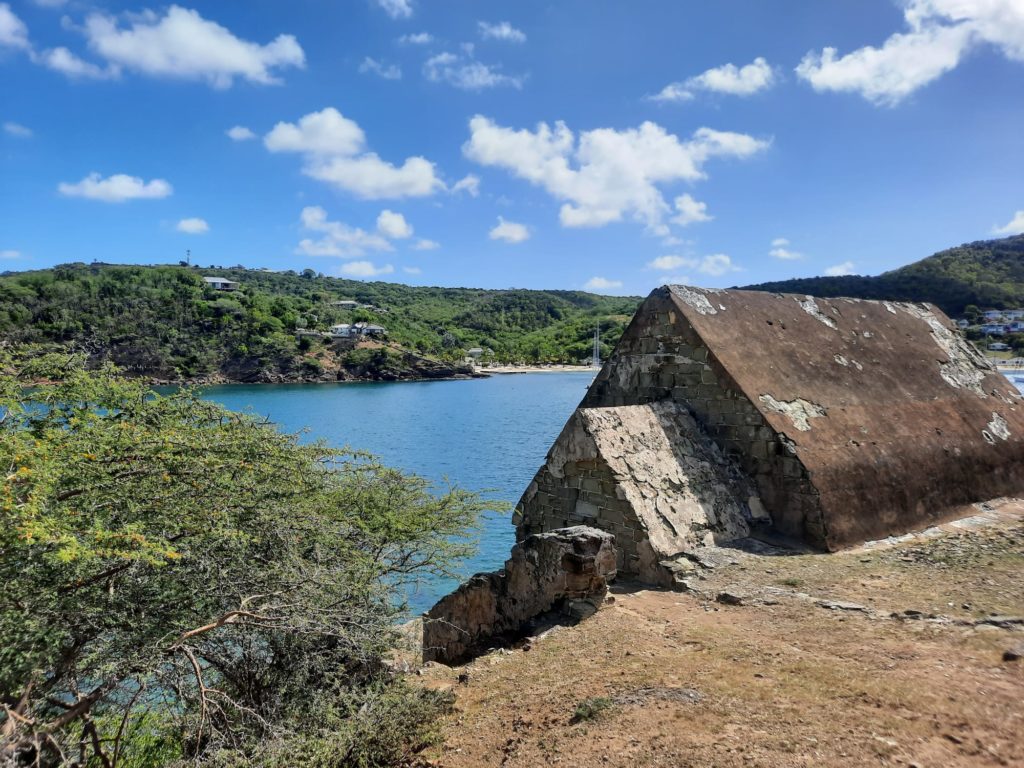
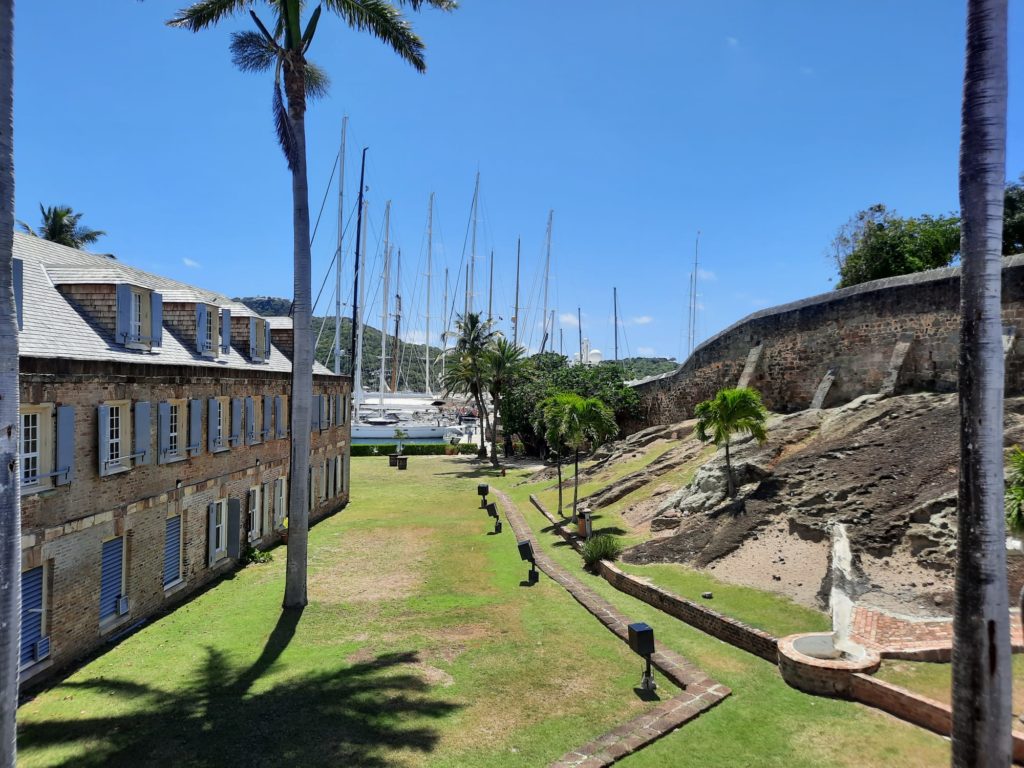

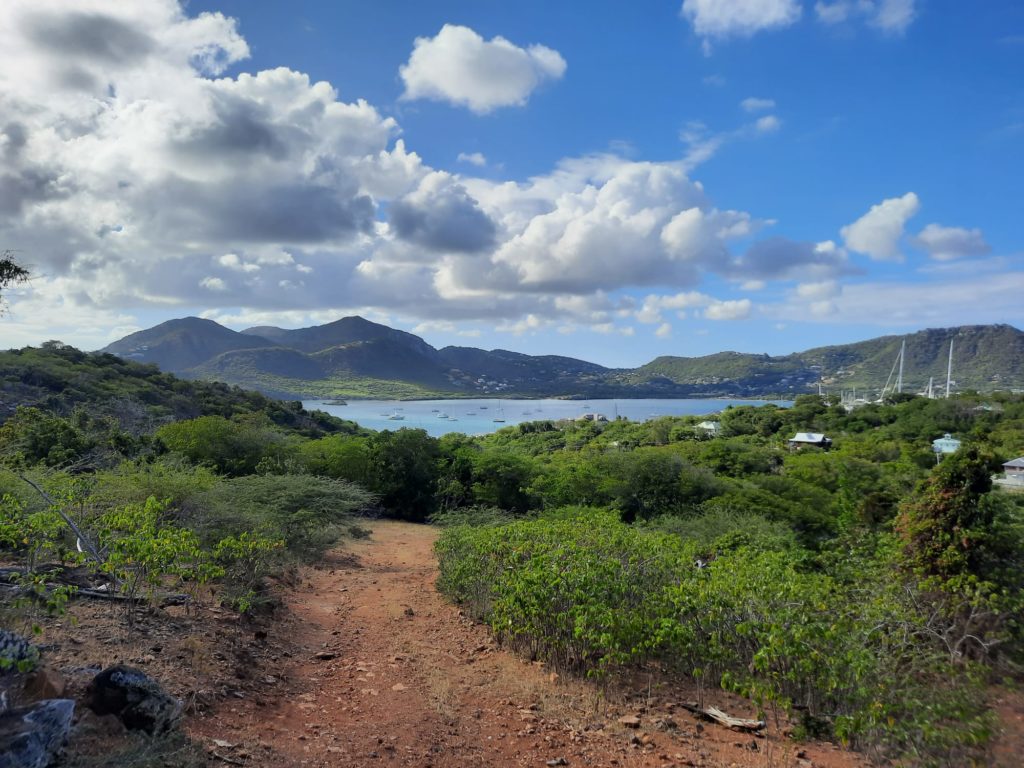
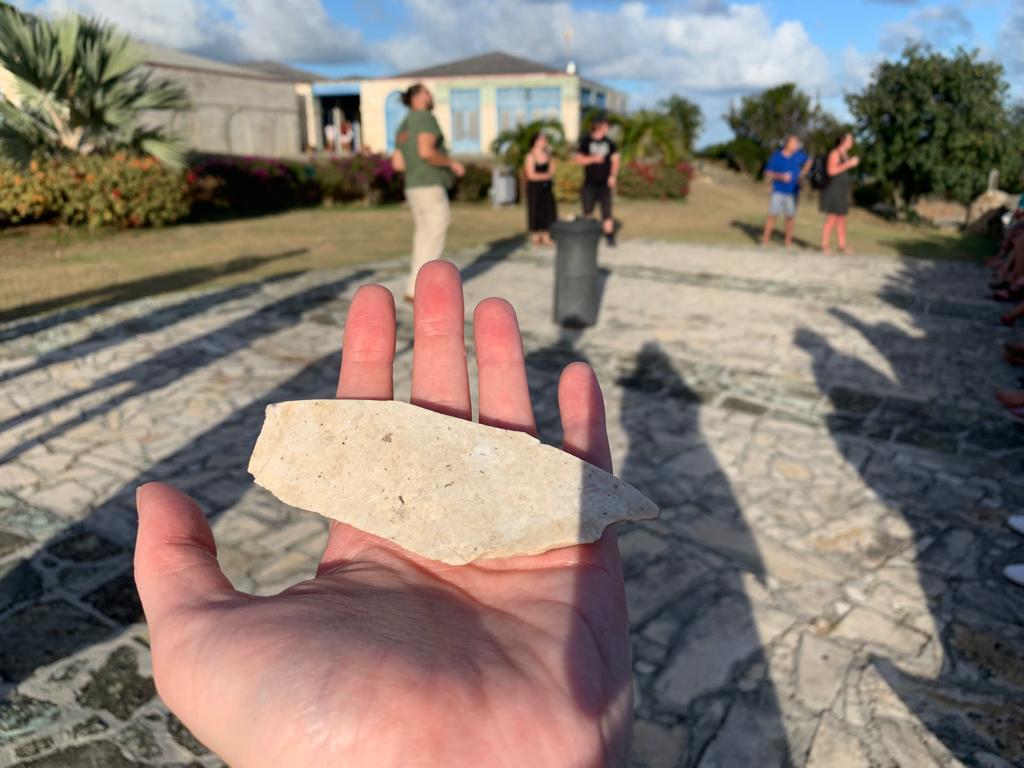
Exploring English Harbour
For our week in Antigua and Barbuda, the Urban Geographer and I based ourselves at English Harbour. There were a couple of reasons for this decision. Firstly, while there are a lot of seemingly nice resort hotels in Antigua, I don’t need to travel quite that far for an all-inclusive vacation. Living in London, both flights and hotels are cheaper if I stick closer to home. Secondly, I found the history in English Harbour intriguing. When else will I have the opportunity to stay in a hotel which is part of the world’s only remaining Georgian Dockyard?
Nelson’s Dockyard is a good place to start. Part of a UNESCO World Heritage site, it is named for Lord Nelson, who was here from 1784 to 1787 (but didn’t like it and described it as ‘vile hole’). There is a charge to enter, but then you can explore a museum and historic buildings surrounded by a yachting marina. There are also walking trails to ruined forts. Also within the UNESCO site are Clarence House and Shirley Heights. The former has many royal connections including being an unsuitable honeymoon location for Princess Margaret. The latter is a restored military lookout and gun battery which hosts a twice-weekly party with steel drum band and barbecue on Thursdays and Sundays. I recommend going on a Thursday when the crowds are smaller.
There are a good few days of activities for those wanting to explore English Harbour. A perfect day in my opinion consists of grabbing sandwiches from the bakery in Nelson’s Dockyard and walking to a beach, maybe Pigeon Point Beach. After a day reading, swimming and watching brown pelicans fishing in the shallows, head back for a cocktail and dinner. Or an alternative evening activity which I highly recommend is Rum in the Ruins. Taking place on Fridays at sunset at the Dow’s Hill Interpretation Centre, Rum in the Ruins alternates different talks on archaeology and culture in a historic setting. You get to handle genuine artefacts, and receive two drinks tickets with entry. Sublime.
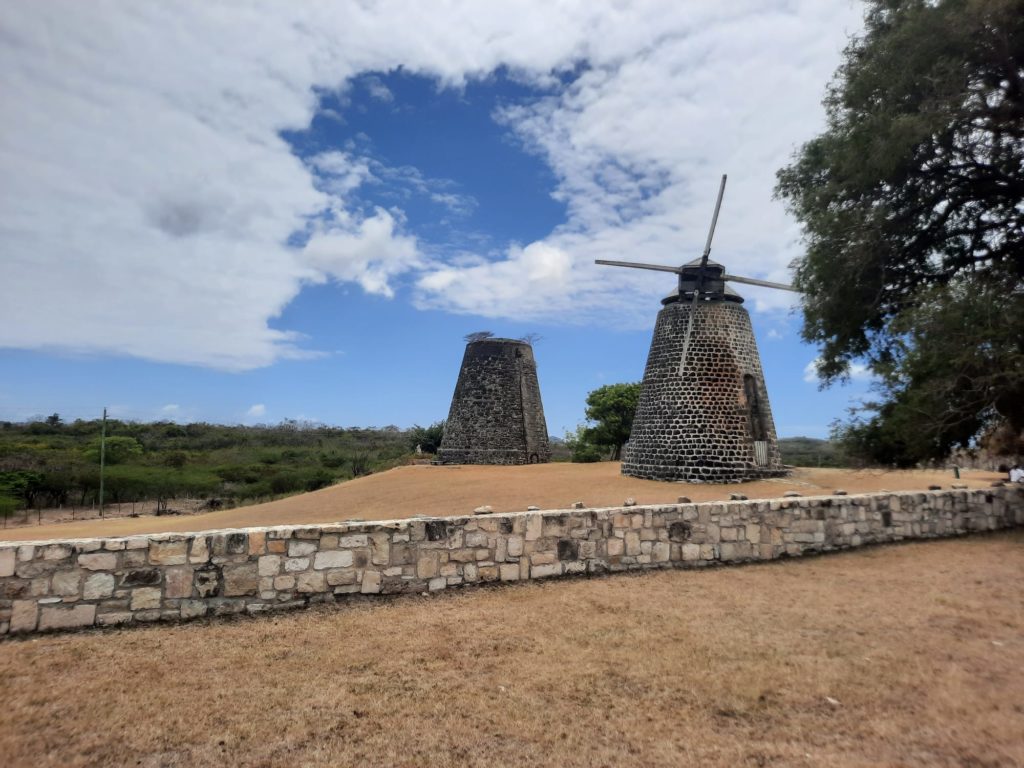


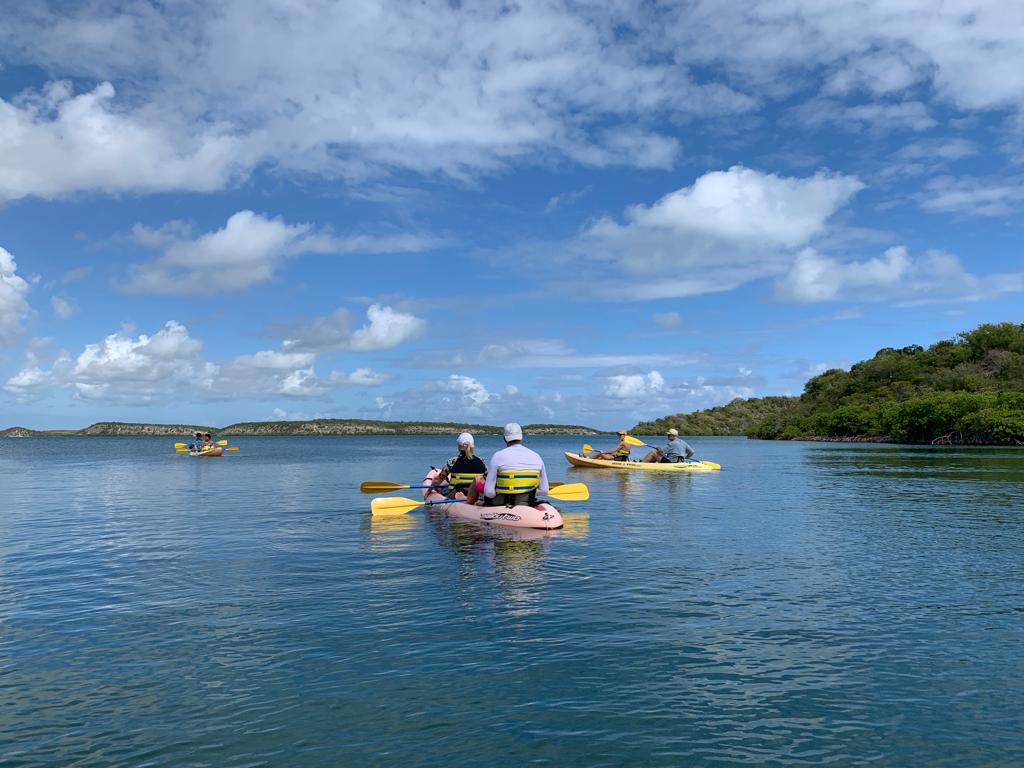
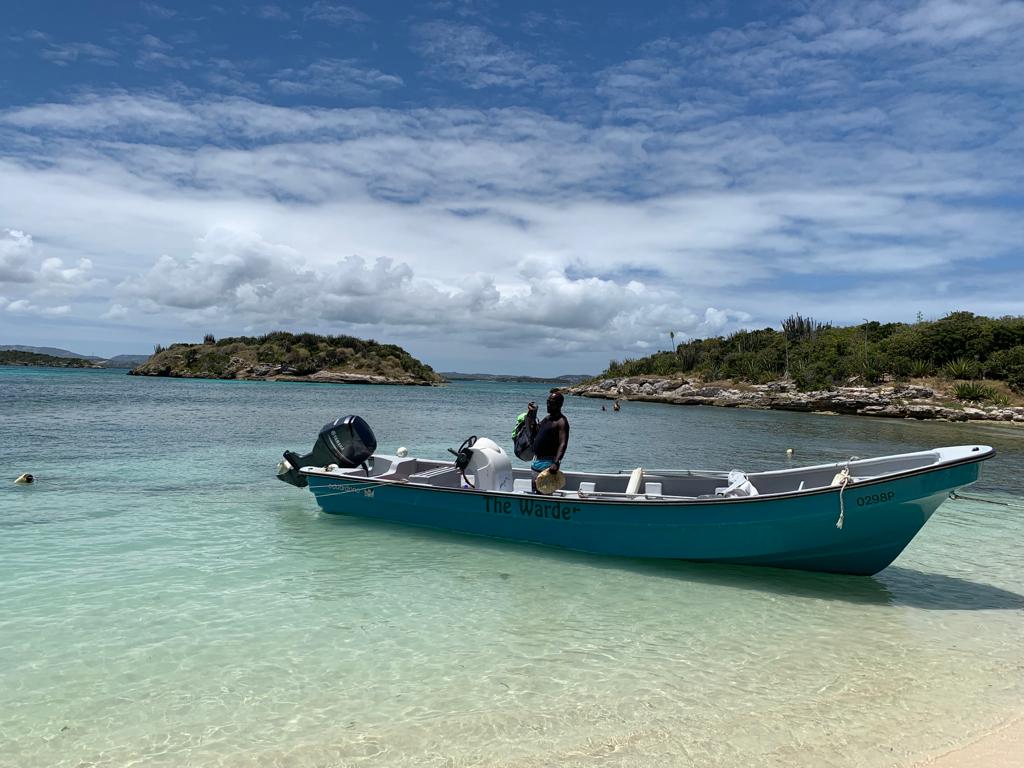
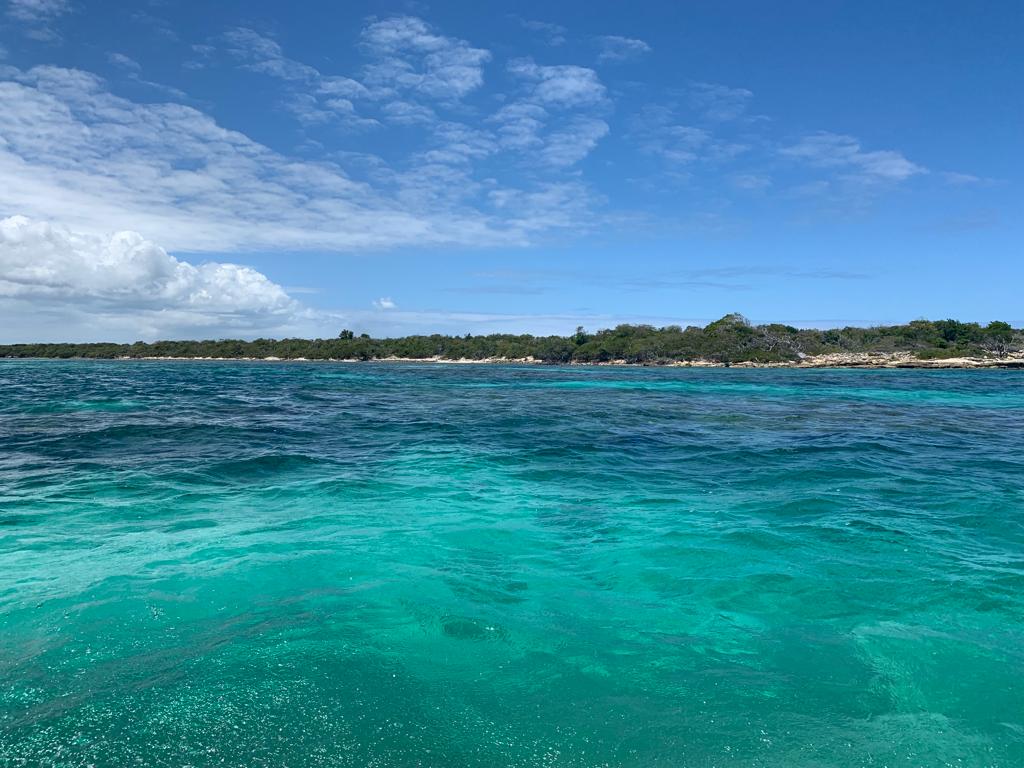
What’s Nearby? Getting Out And About in
Per the section above, there is a lot to explore just in English Harbour and you can easily fill a few days locally. By going a bit further afield, there is plenty more to discover. The sites of interest fall basically into two categories: cultural heritage and natural heritage.
In my opinion if you can only make it to one cultural heritage site, you should make it Betty’s Hope. Established in 1650, it was the largest sugar plantation in Antigua. It remained in the hands of the Codrington family until 1944. Today there is a small onsite museum, and two windmills. One has been restored and one is in ruins, providing an interesting contrast. You can also see the ruins of houses and other buildings including a rum distillery. The area where the enslaved workers lived has left fewer traces but interesting archaeological work has been carried out here. It’s about a 25 minute drive (ie. taxi ride) from English Harbour, part of it around the beautiful Willoughby Bay. A good place to contemplate the difficult parts of the island’s history and consider the legacy of colonialism and enslavement.
When it comes to natural heritage, there is plenty to choose from. We selected Antigua Nature Tours. Their half day trips combine gentle kayaking with a snorkelling stop at Great Bird Island. Our guide showed us various creatures living in the mangroves, before we explored a coral reef. As I’ve talked about before, there is a duty of care for conscientious travellers to work with companies that minimise their footprint on the natural world. Antigua Nature Tours is a twin business with Stingray City, sharing facilities in Seaton’s. For my money the more sustainable option is definitely the kayaking/snorkelling trip. You can’t book Antigua Nature Tours online, and will be competing with cruise ship visitors, so get your hotel to book in advance and arrange a taxi transfer.
And if neither of these options tempt you, never fear. You can go birdwatching, hiking, explore old forts and more within easy reach of English Harbour.
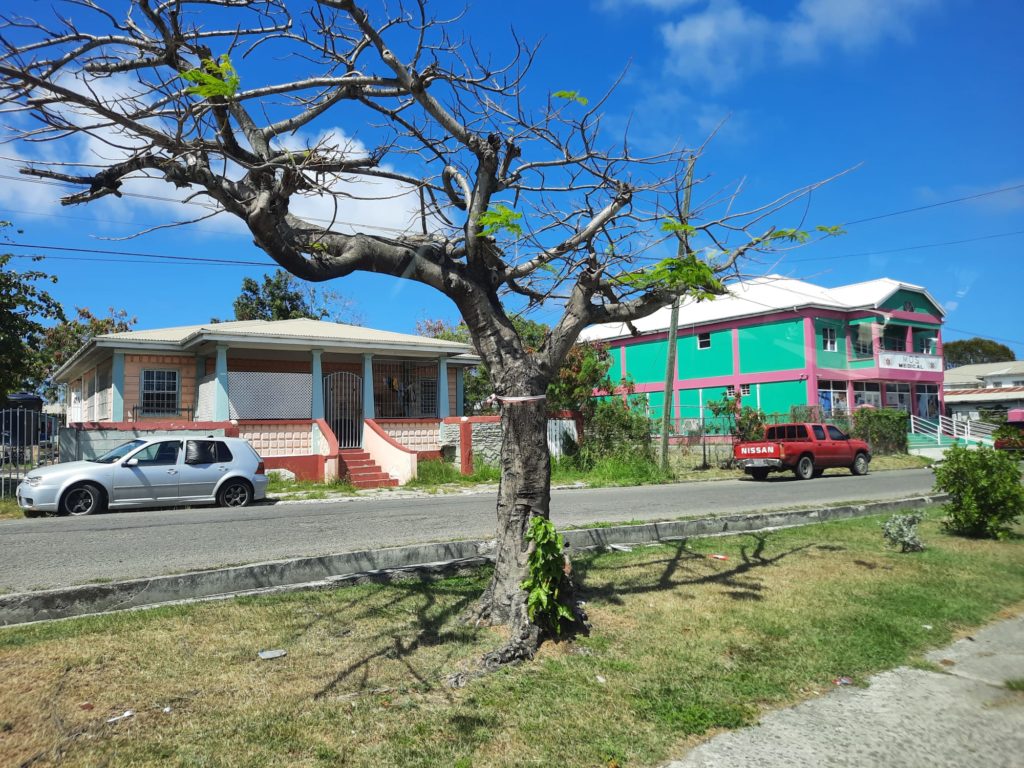

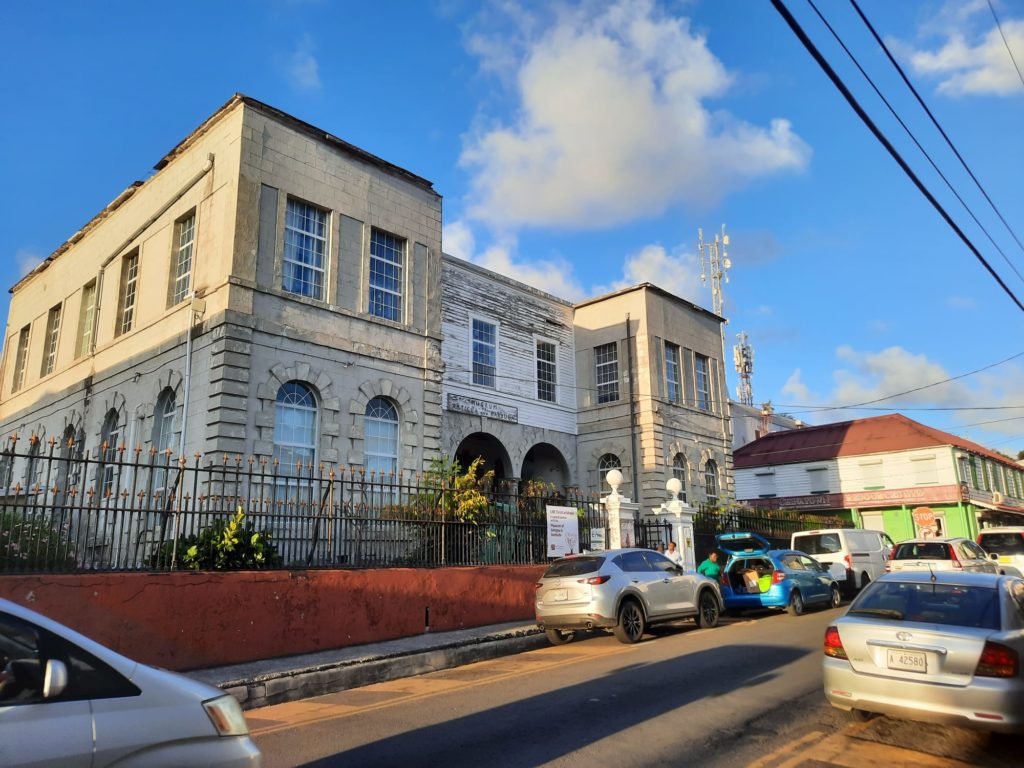
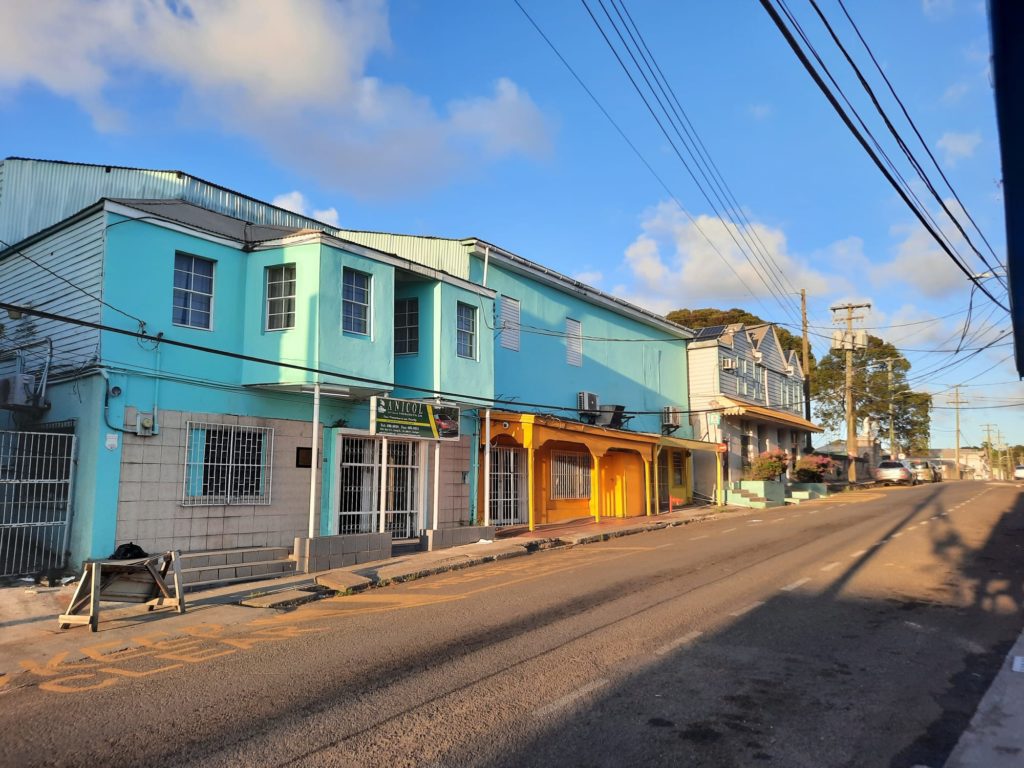

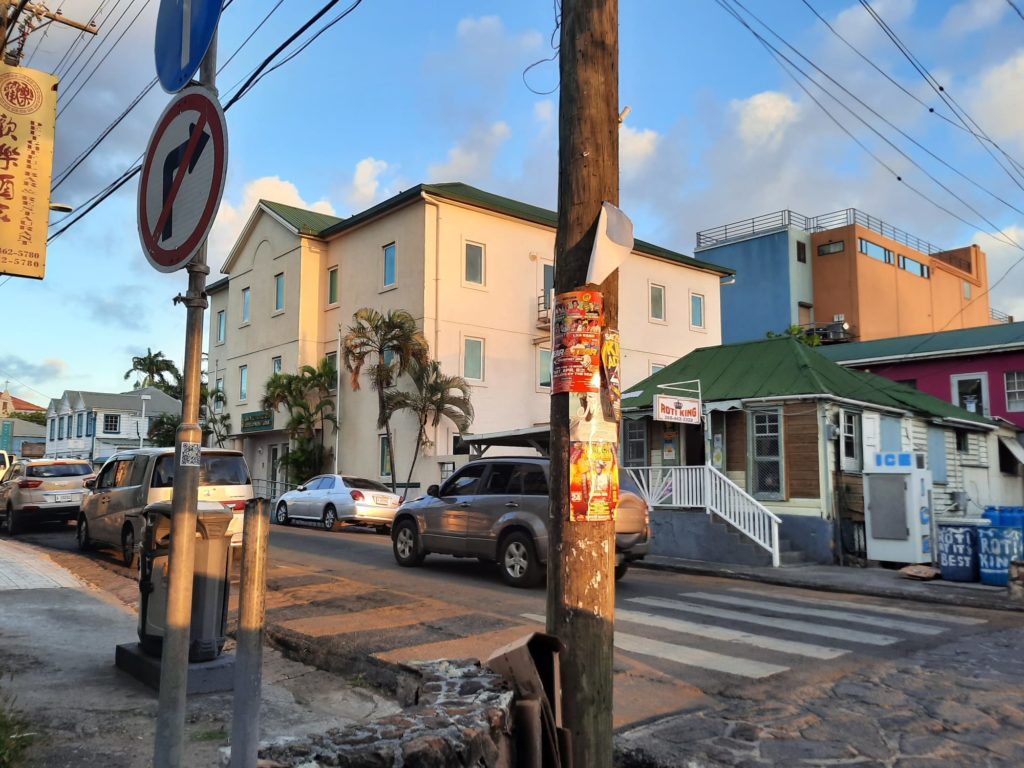
A Half Day In St John’s
This was one my partner and I hesitated over whether to do, but I’m glad we did. St John’s, the capital city of Antigua and Barbuda, has a population of just over 20,000. It’s been the administrative centre since 1632 and also has the chief port. This means it’s where the many cruise ship passengers arrive, and was also our point of departure for our day trip to Barbuda (more on this below). The advice generally is to avoid cruise ship days because they’re busy and prices might be higher. But it turns out most days are cruise ship days in season.
Since St John’s has always been the capital city, there are a number of historic sights. The imposing St John’s Cathedral dates to 1845. It is the third incarnation, the others having succumbed variously to fire and earthquakes. In an attempt to avoid the same happening again, this version is built of stone with a wooden interior. Lead figures of saints at one gate were reportedly taken from a French ship in 1756. If it’s open when you visit it’s definitely worth a look.
Just down the hill, we really enjoyed the Museum of Antigua and Barbuda. I’ve shared more on this in a separate post, but it provides a charming overview of the islands (mostly Antigua) from geography to ancient and recent history. Then you can wander over to Redcliffe Quay with brightly painted colonial architecture (much better than Heritage Quay which is all about duty free shopping). Or head back up the hill to check out more modern history at the Antigua Recreation Ground, home of Sir Vivian Richards’ famous 56-ball test century.
A half day is about right for a wander and something to eat. We enjoyed a cocktail overlooking the cruise ship terminal before heading to the airport. We had arranged via our hotel for a driver to take us and our bags in the morning and wait for a couple of hours while we looked around. You could also do a return trip via taxi or try out local transport.
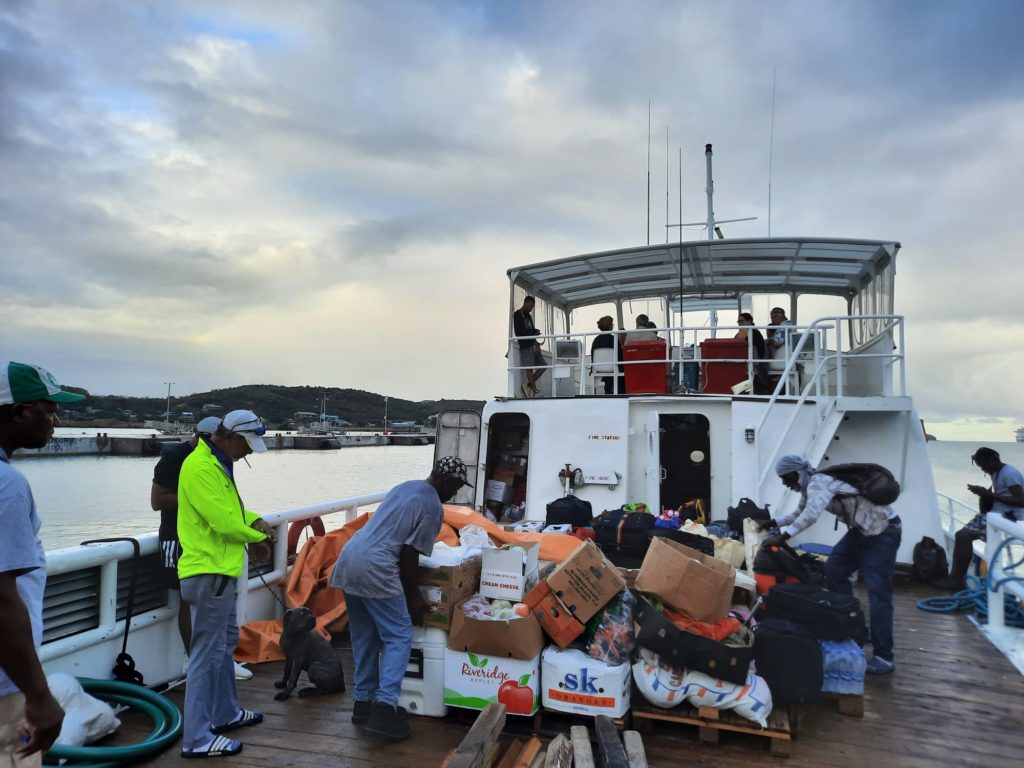
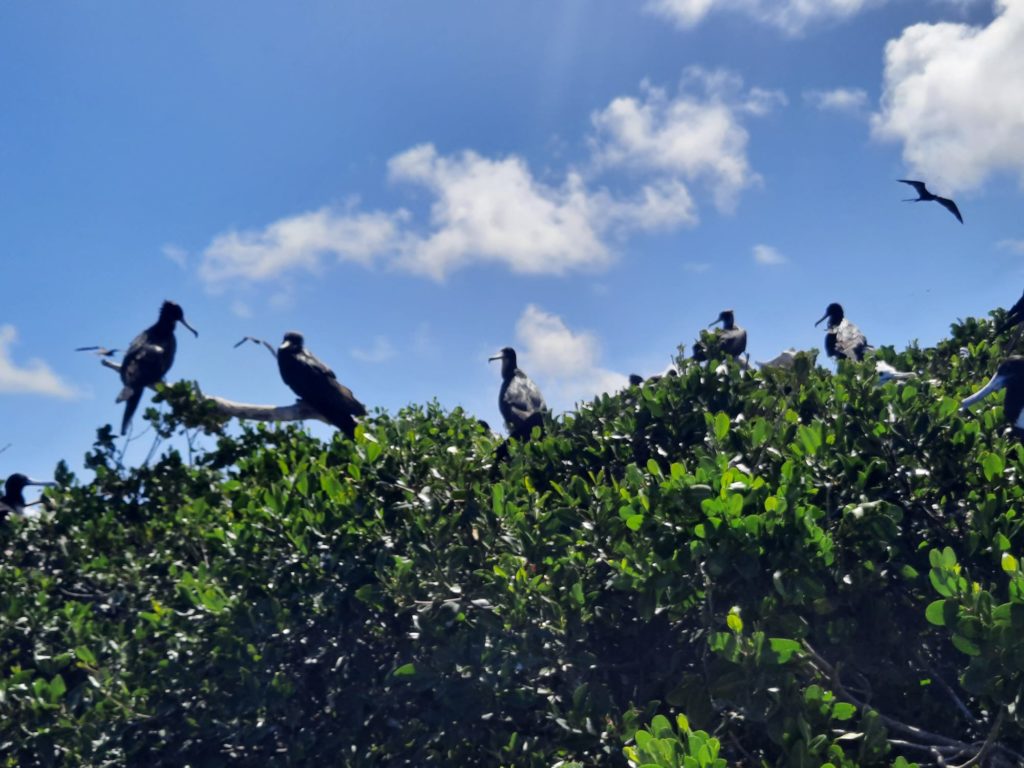



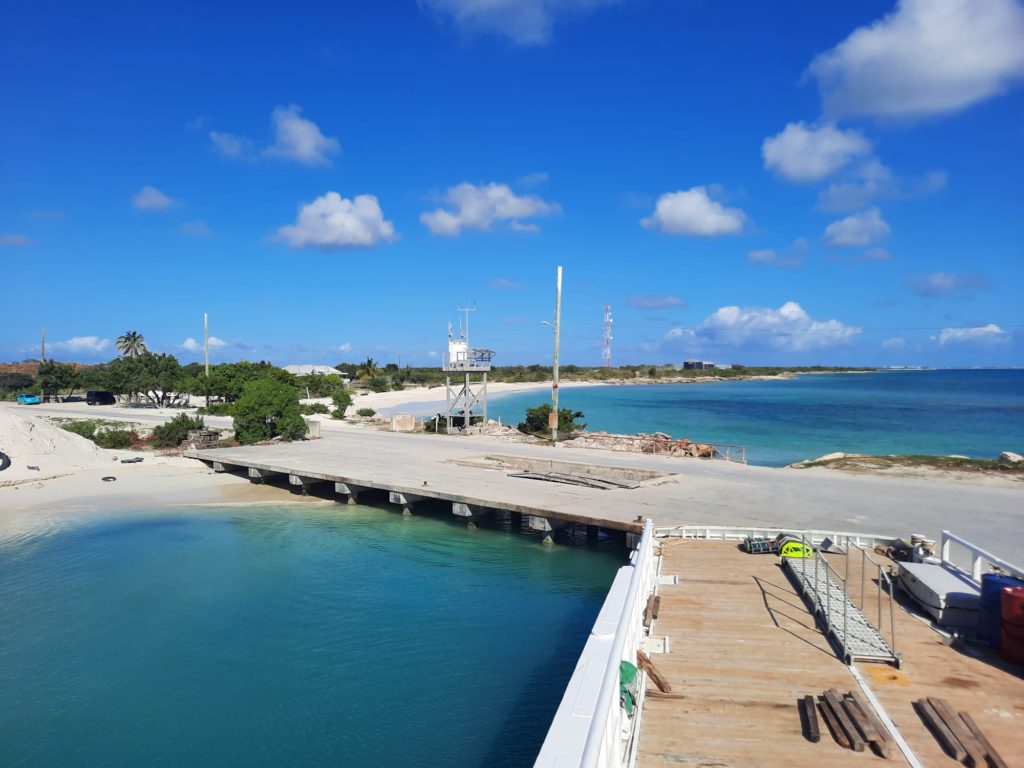
A Day Trip To Barbuda
The one activity we had booked in advance was a day trip to Barbuda. This is provided by the ferry company Barbuda Express, who have a local partner for the tour once you arrive. It’s not cheap, but it’s well organised. You get the ferry across in the morning (about two hours, can be rough). When you arrive, there are enough drivers for the number of people booked on that day. They divide you up, and drive you around Codrington a bit before taking you to your first stop. Barbuda is such a small place population-wise that the tour is rather charming: every bit of infrastructure down to a bus stop becomes a talking point.
Barbuda is such a different experience to Antigua that I found it fascinating. As I mentioned earlier, the landscape is very different. It’s so flat you can hardly see it from the ferry before you arrive. There’s a lot of open space, and beautiful views from the few high points. You will also get to see the national flower, the otherworldly, towering Dagger’s Tree. The other highlight from a natural heritage perspective is a huge colony of frigate birds. You will be taken there by boat, and will have plenty of opportunities to see and photograph them. If you’re lucky they will be in mating season and showing off their big red gular pouches to attract the ladies. Nearby is a pink sand beach for the Instagram crowd.
Because the population has always been so sparse there is more natural than cultural heritage on Barbuda. But keep an eye out for the Martello Tower, a ruined fort you may see from the road but won’t visit on your tour. Overall I found my Barbudan daytrip helped me gain a fuller perspective on Antigua and Barbuda as a nation. I recommend setting aside a day for this if you have a week or so in the country. You could of course stay in Barbuda, but that’s more for those looking for a secluded beach getaway.
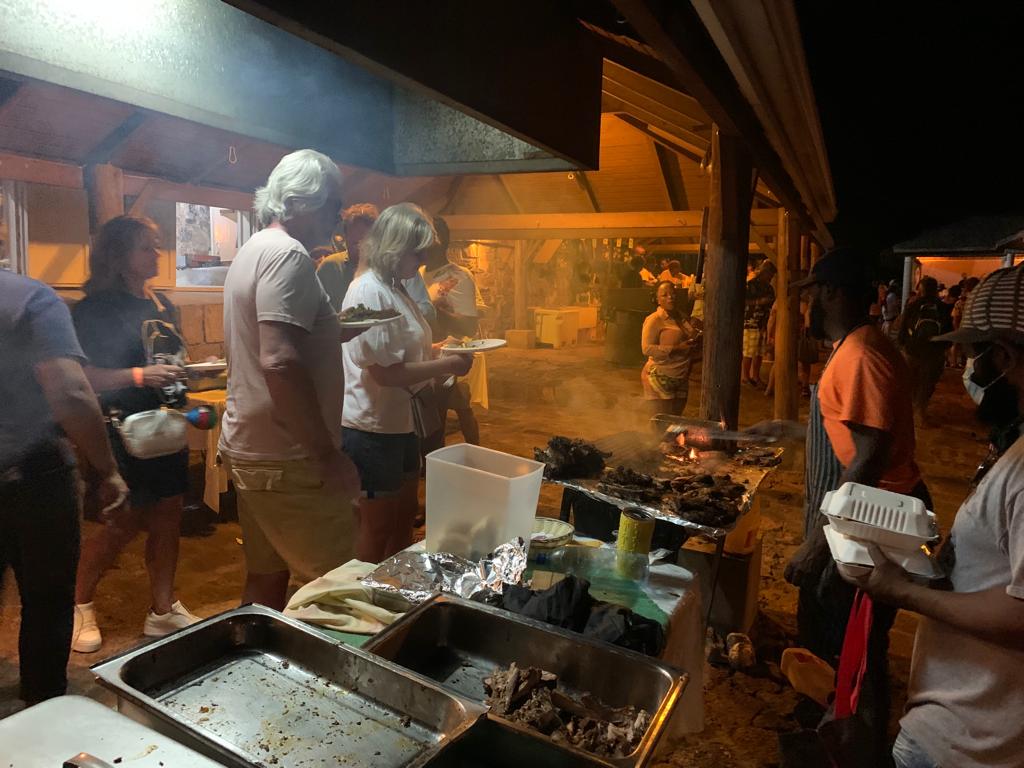

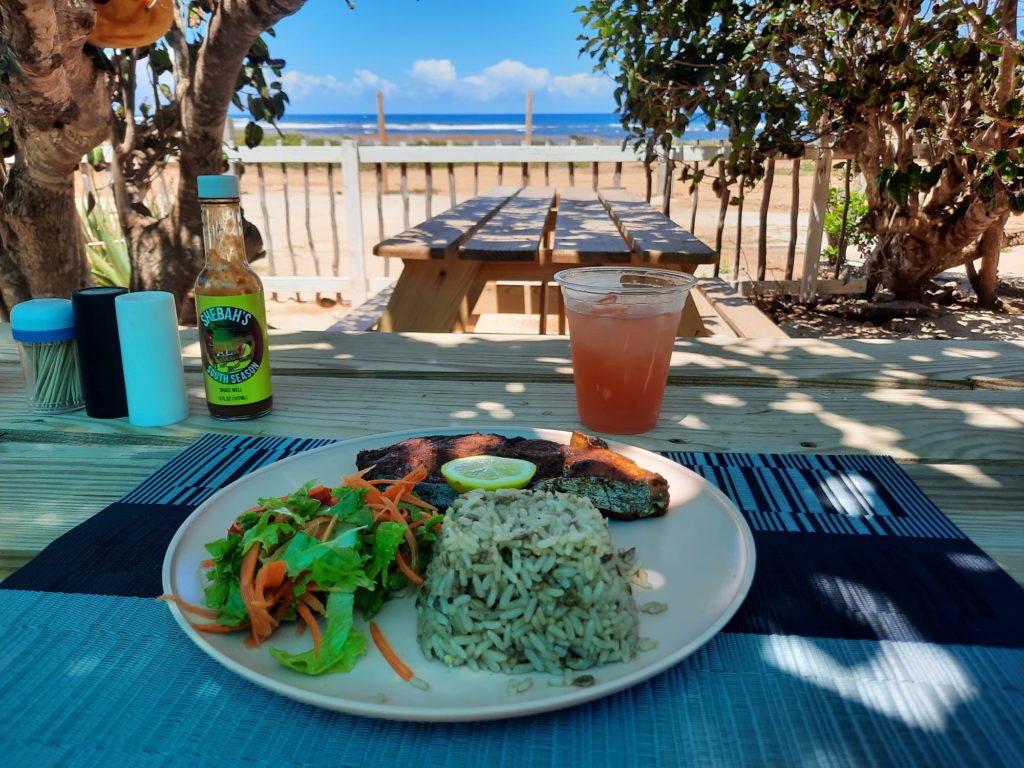
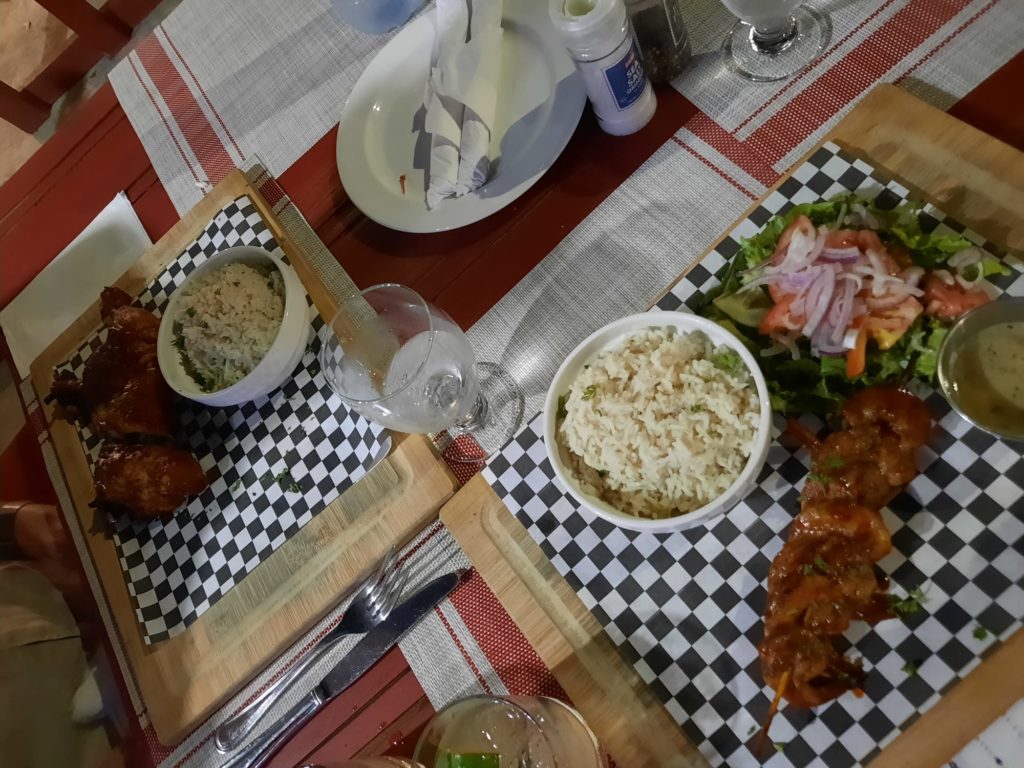

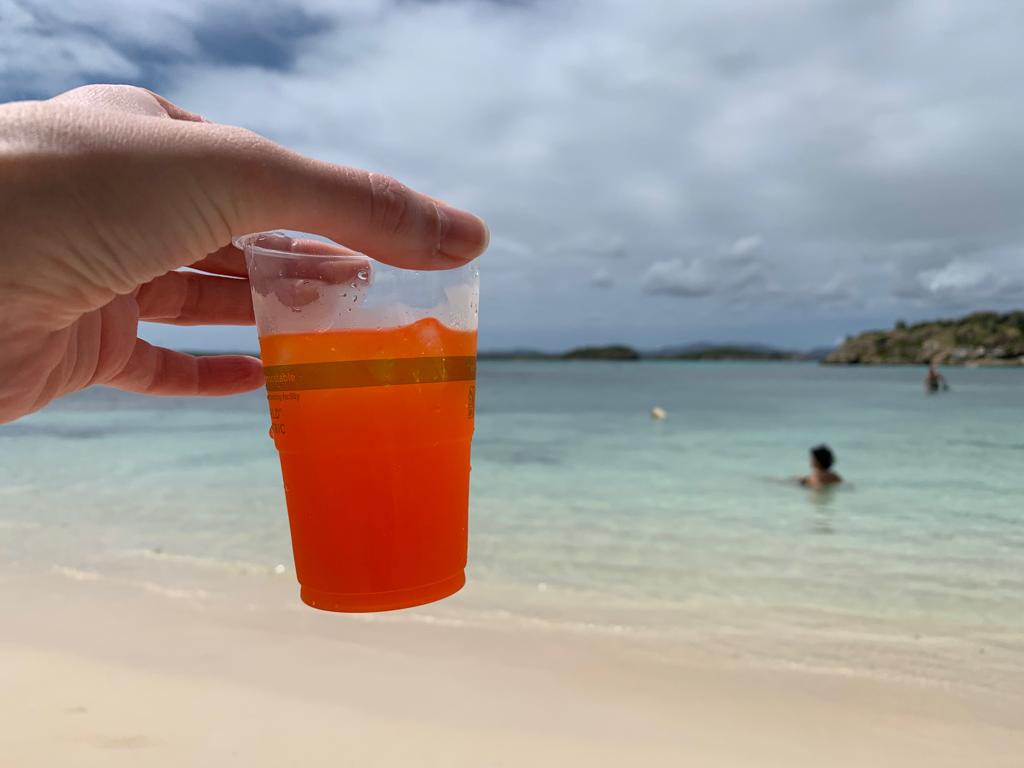
Food And Drink
Ah, time for the food and drink section, I hope you’re hungry! There is a lot of choice in and around English Harbour, so you won’t be short of options or forced to rely on what your own hotel provides. A lot of the food is international in style, but the ingredients are fresh, particularly the food and seafood. Common local fish varieties includes mahi-mahi and wahoo, and there are also local lobsters. One of the most delicious meals I ate was wahoo, covered in Creole spices and barbecued, on my Barbudan daytrip. And I enjoyed the accompanying local hot sauce so much I brought several bottles back with me.
Back to English Harbour. We ate at our hotel a few times and enjoyed the fare, including a touristy but fun Caribbean-themed night with a steel drum band. Jerk and peri-peri dishes aren’t strictly local, but are tasty. I liked Flattie’s Flame Grill near Falmouth Harbour, as well as the options up at Shirley Heights. For a sophisticated lunch or dinner I recommend Catherine’s Café at Pigeon Point Beach (French cuisine), and it’s fun to take the complimentary water taxi over to Incanto Italian restaurant. If you or your wallet are getting tired of all these meals out, there’s a supermarket in English Harbour called Covent Garden, or the bakery I mentioned at Nelson’s Dockyard. Just bear in mind that if you’re not staying within the Dockyard, it’s within the ticketed area.
In terms of drinks, it’s all about rum. English Harbour is actually a brand you will see and can pick up in duty free to bring home. Rum punch is a frequently potent and luridly coloured beverage which should be tried at least once. Or if you go to Rum in the Ruins, you will try it twice while admiring the sunset.
One disappointment I had food and drink-wise was the lack of more local options. My guidebook listed a number of local dishes to try which I didn’t see on most English Harbour menus. I could definitely have tried harder, though, so that’s mainly on me. And in terms of taste and quality of what I did eat, I regret nothing.
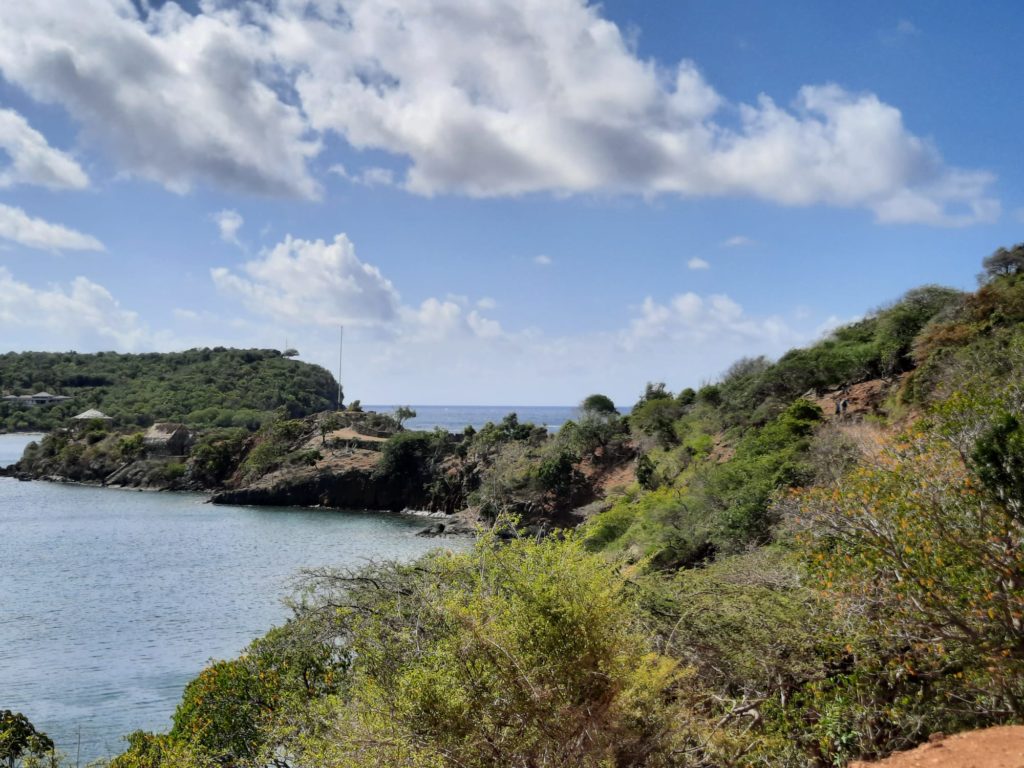
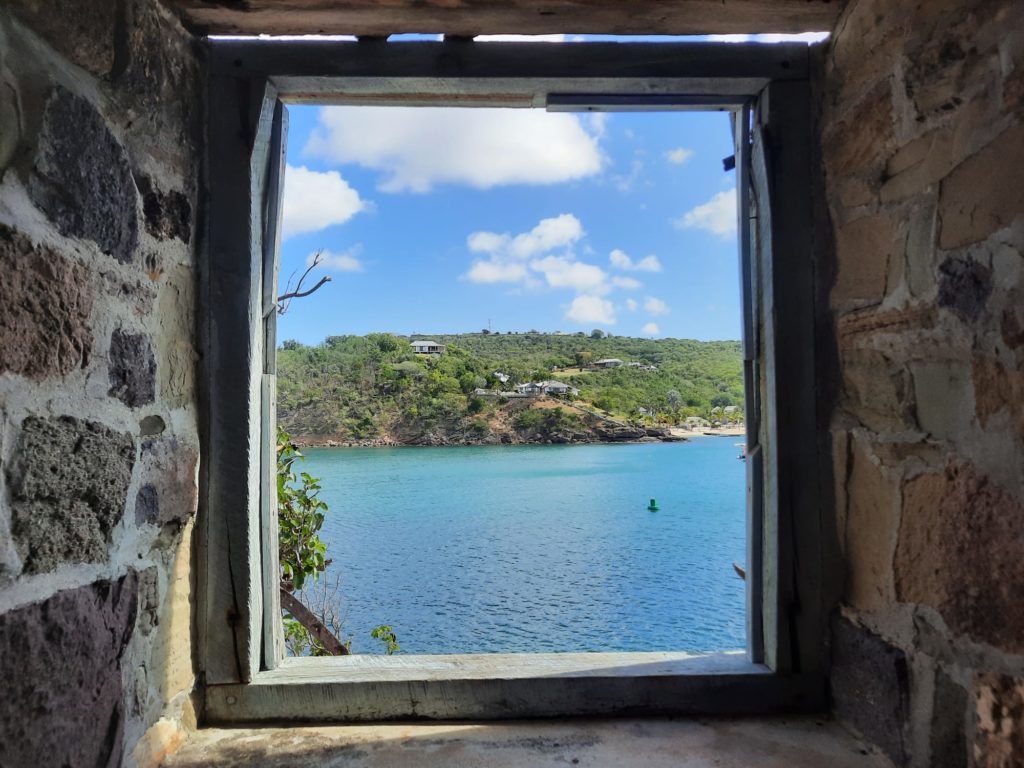
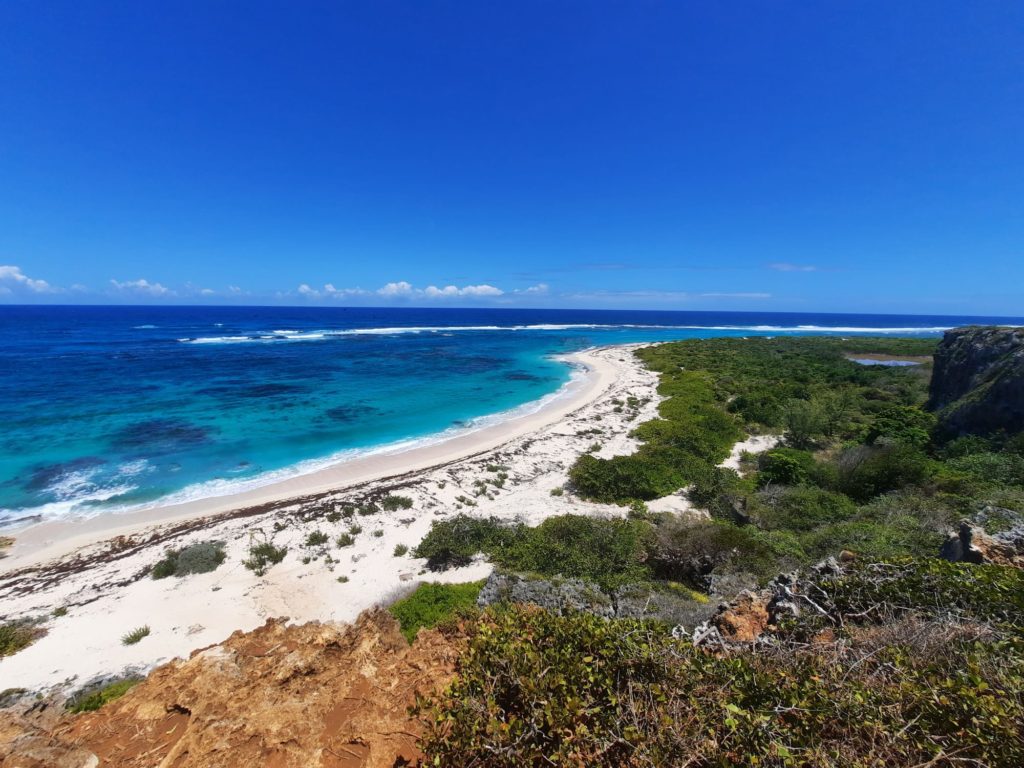

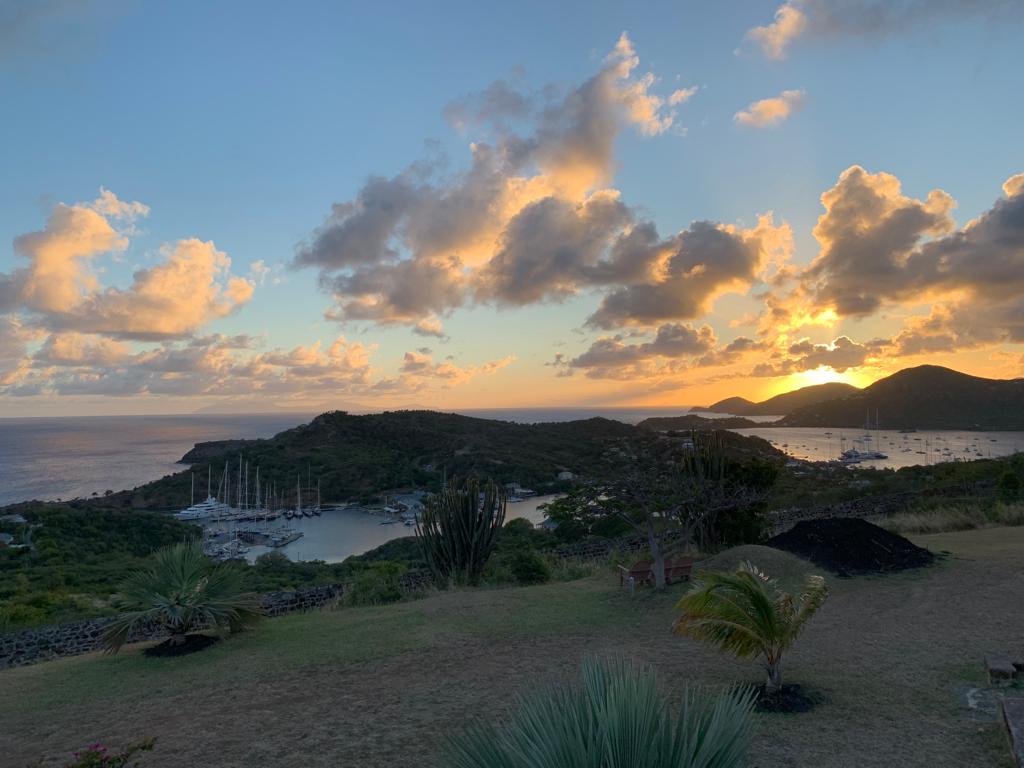

A Few Final Practicalities
I hope you’ve got a sense over the course of this post of some ways to combine a fun beach holiday with some cultural content while in Antigua and Barbuda. As it’s somewhere most of us will probably only travel once, here are some tips from my experience.
Do ask if there’s something you want to do. We saw Betty’s Hope on a detour from another activity, and arranged our half day in St John’s as an extended airport transfer. There will be a cost associated, but everyone was generally flexible and reasonable when it came to figuring out logistics.
Do plan more popular activities ahead of time. Things like kayaking, stingray feeding and zip-lining get booked up in advance by cruise ship passengers so you may not get your day or time of choice. Betty’s Hope, Shirley Heights or St John’s can be done on the fly.
Do call Donald if you would like a friendly and reliable taxi driver. His number is +1 (268) 723-9295. I don’t get any incentive for the recommendation, we used him twice and recommend him to you!
Don’t let your cash run down completely. We found the only local ATM which we could use ran out of money one day, and we needed cash for an activity we had planned. Our hotel gave us a cash advance, but it was needlessly stressful. Also note that Antigua and Barbuda use both East Caribbean Dollars and US Dollars. ATMs will only distribute the former.
Don’t forget a good supply of sunscreen. English Harbour is not a cheap destination, and we didn’t see a bottle below about 30 USD! Take more than you think you need.
Don’t go to Shirley Heights on Sunday. The party on Thursday was perfect: enough people to have a good vibe, but the queues weren’t too long and there was space to sit when you wanted it. You can pay by card for food and drinks but might want cash for incidentals or souvenirs.
If you see this after your page is loaded completely, leafletJS files are missing.

